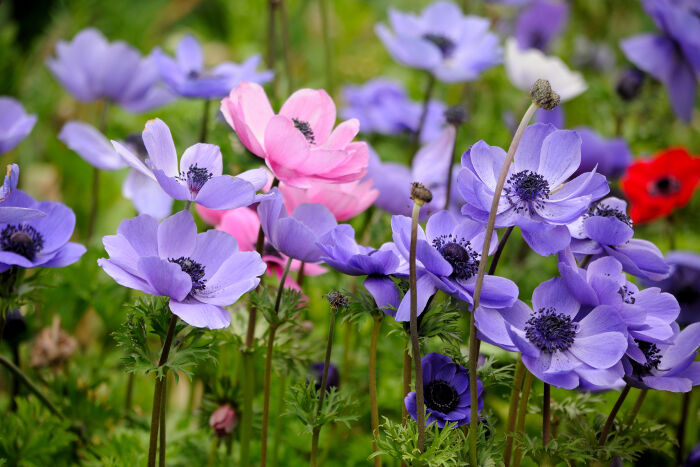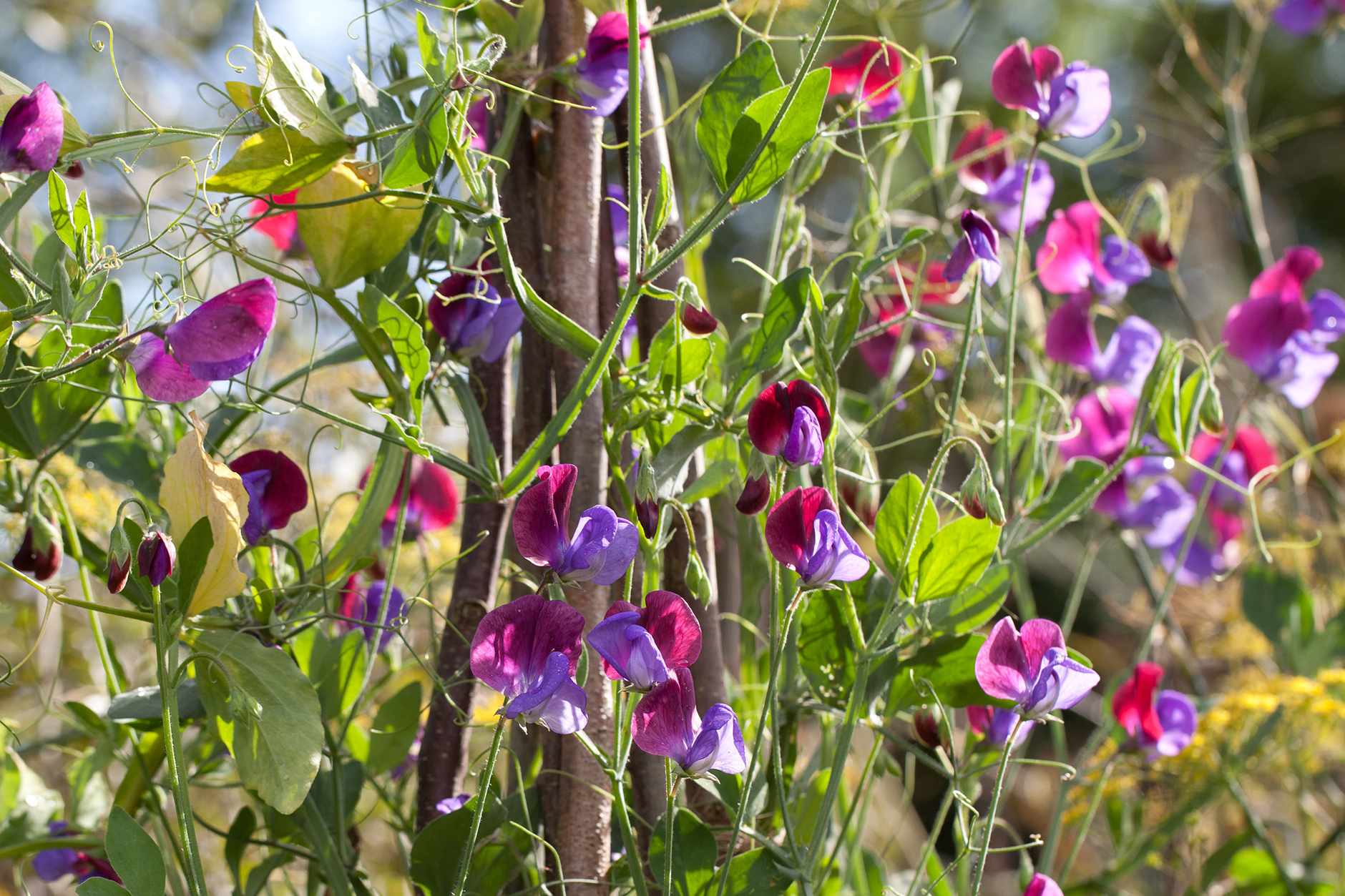Spring has sprung and so have the beautiful flowers the season brings! You can see their bright colorful blooms all over New York City. They are in planters and tree pits, outside subway stops, and, of course, they’re all over Central Park!
This Spring, we’re featuring three of our favorite seasonal flowers in many of our floral arrangements: Ranunculus, Anemone and Sweet Peas. Read on to learn some interesting facts about these lovely beauties and their unique names!

image via: rockflower
RANUNCULUS
Definitely one of the trickier flower names to pronounce, Ranunculus is in a large genus of plants with more than 500 varieties. Sometimes called Buttercups, the flower gets its name from the Latin words rana and unculus, which together mean “little frog”, as they are usually found growing near water.
The Ranunculus produces rose-like blooms with tissue-thin petals in a wide range of colors: from cream and pale yellow to deep red, and burgundy. Different parts of the Ranunculus plant have historically been used in Native American traditional medicine to treat headaches and colds.
Many of our Spring floral arrangements feature the sweet and delicate Ranunculus. See how we’ve used it in these eye-catching creations: Sweet Sorbet, Peachy Keen and Country Meadow.

image via: Claire Austin
ANEMONE
There are about 200 species in the Anemone genus. They get their name from the Greek word anemoi, which means “winds.” That is why they are sometimes called windflowers, especially when found growing in the wild.
Anemones produce graceful nodding blooms on long wiry stems that come in white, purple, violet, red, and yellow-white. While some larger varieties bloom in the fall, such as Anemone hupehensis, most will flower in the spring or summer. Anemones are sometimes used in traditional medicine to treat cramps, menstrual problems, and emotional distress.
We just love this pretty flower, which is why we’ve featured it in many of our Spring floral arrangements. Check out the gorgeous anemones in Butterfly Dreams, Dreamland and Swoon!

image via: inspired room
SWEET PEAS
To find out how these adorable flowers got their name, you first have to look up their scientific botanical name: Lathyrus odoratus. This was derived from the Greek word lathyros for “pea” or “pulse,” and the Latin word odoratus which means “fragrant."
Native to Cyprus, Sicily, and southern parts of Italy, Sweet Peas are adored for their delicate flowers that come in a wide spectrum of colors. Some varieties have a lovely fragrance that will remind you of a happy Spring meadow.
Some of our latest floral arrangements feature simply-precious Sweet Peas. Here are some we just can’t resist: Welcome Sunshine ,Veranda and Magical Morning.













